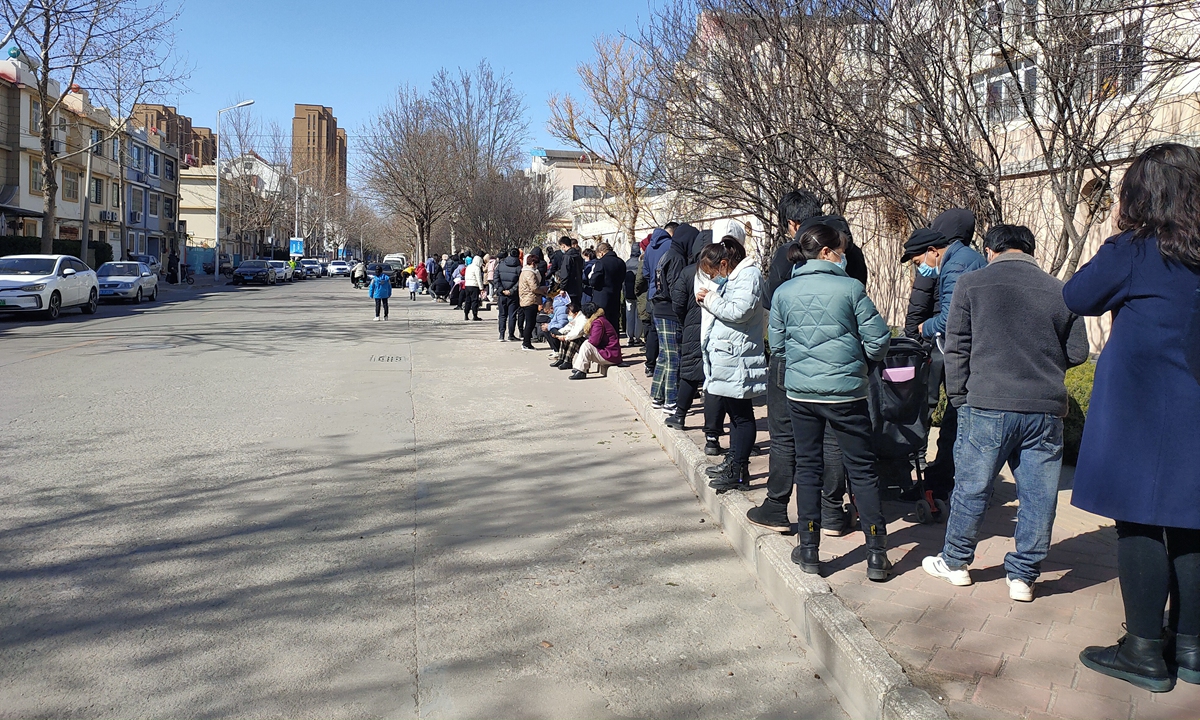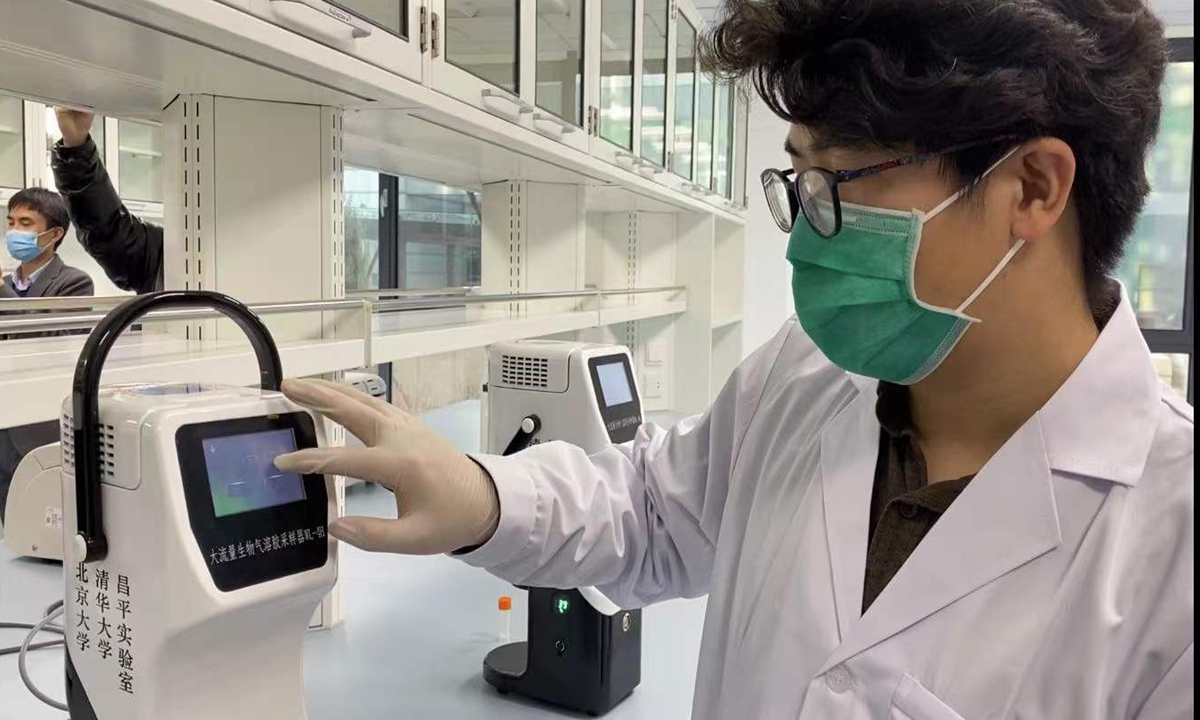
Residents line to take nucleic acid tests in a community in Laixi, East China's Shandong Province on March 5, 2022. Photo: VCG
The potential spread of COVID-19 through aerosol transmission sparked public concerns after a resident from East China’s Shandong Province contracted the virus while digging vegetables outdoors near someone with asymptomatic infection. Experts suggested ventilation and disinfection could reduce the virus’ intensity.
Neither the resident nor the asymptomatic carrier was wearing a mask. The epidemiological survey and big data analysis of the case showed that the resident contracted the virus through aerosol transmission, according to a post on the official WeChat account of Taierzhuang district in Zaozhuang, Shandong.
Aerosol transmission refers to the mixing of droplets in the air to form aerosols which cause infection after inhalation.
The Taierzhuang authority said the case happened in March in a bid to remind the public to wear masks when they go out, Jimu News reported.
COVID-19 infection caused by aerosol transmission is believed to have happened in multiple places.
A confirmed infection from Ningbo in East China’s Zhejiang Province probably spread the virus to two other drivers in an underground garage with their car windows open and none of them wore masks. The local disease prevention and control center in Ningbo released the information on Sunday, reminding the public of the probability of aerosol transmission.
Speculation about aerosol transmission was put forward as early as last May when an elderly resident from Guangzhou in South China’s Guangdong Province contracted the virus after she visited a local hospital which was also visited by someone with COVID-19.
Experts noted that aerosol transmission can happen in small or confined spaces such as elevators and movie theaters. Some pathogens may travel long distances via fine particles in the air and viruses can survive long after they form aerosols.
Experts suggested that ventilation and disinfection can reduce aerosol concentration and surgical masks can provide effective prevention.



